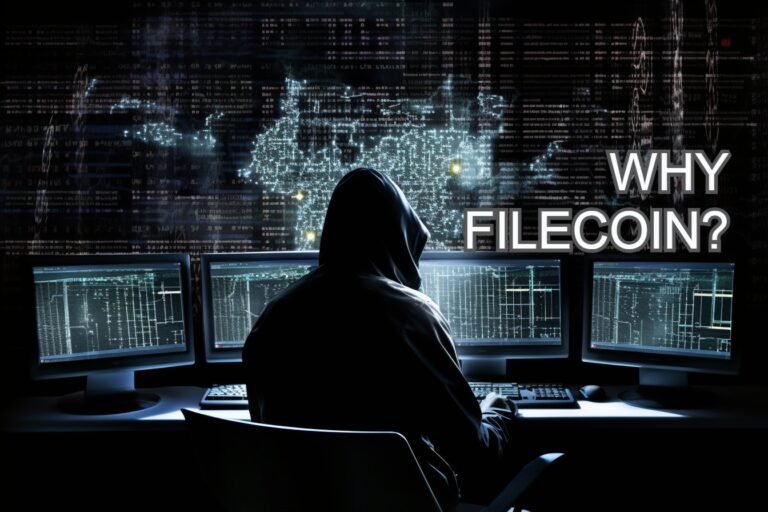In our increasingly digital world, data has become the lifeblood of our personal and professional lives. From cherished memories to critical business information, the security and availability of our digital data are paramount. Unfortunately, a growing menace threatens this security – ransomware. In this blog post, we’ll delve into what ransomware entails, how it operates, and, most importantly, explore how the decentralized network of Filecoin can play a vital role in data recovery and protection.
What Exactly is Ransomware?
Ransomware is a malicious software (malware) variant designed with a singular, ominous purpose – to encrypt a victim’s files or their entire computer system, rendering them utterly inaccessible. Subsequently, the malefactors responsible for the ransomware attack demand a payment, usually in cryptocurrency such as Bitcoin, in exchange for the decryption key. However, there’s a dark caveat – there’s no guarantee that coughing up the ransom will ensure the safe return of your files, and, worse yet, paying the extortionists can perpetuate their criminal activities.
The Inner Workings of Ransomware
Ransomware can infiltrate your computer through various nefarious channels, including:
Phishing Emails: Cyber attackers often deploy misleading emails containing infected attachments or malicious links. Interacting with these links or downloading the attachments can trigger the ransomware.
Exploiting Vulnerabilities: Criminals exploit unpatched software vulnerabilities to infiltrate your system. Staying diligent in keeping your operating system and software updated is paramount.
Drive-By Downloads: Visiting compromised or malicious websites can result in automatic ransomware downloads onto your device.
Once inside your system, ransomware employs robust encryption algorithms to lock your files away from prying eyes, making them utterly unreadable sans the decryption key. The ransom note then makes its chilling appearance, demanding payment for the elusive key.
Shielding Your Data: Preventative Measures
The adage “prevention is better than cure” holds particularly true in ransomware. Here are pivotal steps you can undertake to shield your data from this menacing threat:
Frequent Backups: Routinely back up your data to an external device or a secure cloud service. Ensure your backups are not constantly connected to your network when not in use to prevent potential compromise.
Security Software: Install trustworthy antivirus and anti-malware software to aid in detecting and blocking ransomware threats. Keeping this software updated is paramount.
Software Updates: Maintain up-to-date versions of your operating system, software, and plugins—cybercriminals often zero in on known vulnerabilities.
Email Vigilance: Exercise caution when dealing with email attachments or clicking links, especially when the sender is unfamiliar or the email appears dubious.
User Training: Educate yourself and your team on the perils of ransomware and methods to identify phishing attempts.
Network Security: Implement robust network security measures, encompassing firewalls and intrusion detection systems.
Principle of Least Privilege: Restrict user access to only what is requisite for their specific job roles, minimizing the potential havoc ransomware can wreak.
Secure Passwords: Employ robust, unique passwords for all accounts and contemplate using a password manager.
Ransomware Attack: What to Do?
Should you fall victim to a ransomware attack, here’s a protocol to follow:
Isolate the Infected System: Swiftly disconnect the compromised device from your network to prevent further malware propagation.
Report the Incident: Contact your IT department or a cybersecurity expert immediately.
Please do Not Pay the Ransom: Remember that capitulating to the ransom demand does not assure the safe recovery of your data; it merely encourages the criminals.
Restore from Backups: If you have robust backups, utilize them to restore your files and systems once the infection has been eradicated.
The Role of Filecoin’s Decentralized Network in Recovery
Now, let’s explore how Filecoin’s decentralized network can significantly bolster data recovery efforts in the face of a ransomware attack:
Filecoin operates as a decentralized storage network built on blockchain technology. It offers a secure and resilient platform for storing and retrieving data, making it an excellent ally in the battle against ransomware.
Data Redundancy: Filecoin’s decentralized nature means that your data is stored across a vast network of nodes, significantly reducing the risk of a single point of failure. Even if one node is compromised, your data remains accessible through other copies stored on different nodes.
Immutable Storage: Once data is committed to the Filecoin network, it becomes immutable. Even if a ransomware attack encrypts your local data, the original, unaltered copies remain stored on Filecoin.
Decentralized Trust: Unlike traditional cloud storage providers, Filecoin’s decentralized approach minimizes the reliance on a single entity for data security. This decentralized trust model is inherently resistant to ransomware attacks.
Data Recovery: In the unfortunate event of a ransomware attack, you can retrieve your unaltered data from Filecoin’s decentralized network, ensuring minimal disruption and data loss.
Conclusion
In a digital landscape where data is king, ransomware presents a formidable threat to our cherished information. You can significantly mitigate the risk by adopting proactive measures to safeguard your data and staying vigilant against ransomware’s malicious tactics. Additionally, leveraging the decentralized network of Filecoin can serve as a powerful ally in data recovery efforts, providing an added layer of protection and resilience in the face of ransomware attacks. Remember, preparedness and prevention are the keys to fortifying your digital defences against this pervasive menace.




